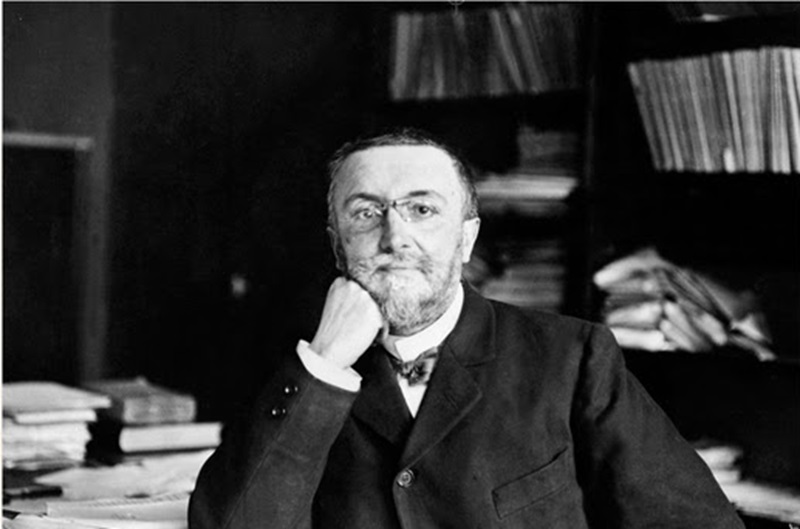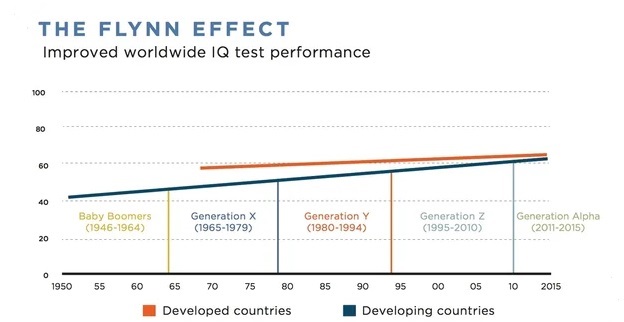The roots of IQ testing can be traced back to the late 1800s when psychologists and educators began exploring ways to quantify and measure cognitive abilities. The first real IQ test was born thanks to the French psychologist Alfred Binet, who conducted cognitive tests to identify students in need of special educational assistance. Binet's IQ test, despite its acknowledged limitations, has achieved global recognition as a method to assess and compare intelligence. Its significance goes beyond its initial purpose, laying the foundation for the development of several IQ tests.
Let’s join a journey to discover the IQ test history, with a focus on Alfred Binet's contributions. It not only highlights the evolution of intelligence testing but also explores modern iterations of the test and the controversies that have emerged surrounding the assessment of intelligence.
The history of IQ testing is marked by several key milestones that have shaped its evolution and influence.
In the 19th century, pioneers such as Paul Broca (1824-1880) and Sir Francis Galton (1822-1911) laid the foundation for measuring IQ, with methods that are now deemed antiquated. Broca and Galton were among the first scientists to delve into the concept of intelligence, proposing a rather unconventional approach by attempting to correlate intelligence with the size of the human skull. Their hypothesis posited that a larger skull corresponded to a higher level of intelligence, reflecting the prevailing scientific notions of their time.
During the same era, other psychologists, including Wilhelm Wundt, and James McKeen Cattell, put forth their perspectives. Cattell suggested the use of straightforward mental tests to gauge intelligence. However, it was only a few years later that the first IQ test came into existence.
It is no exaggeration to say that Alfred Binet is one of the most well-known people in the history of IQ tests. Alfred Binet, a French psychologist pivotal in the advancement of experimental psychology, initially pursued the legal career. However, his fascination with Francis Galton's endeavors to quantify mental processes steered him away from law. During this period, French laws mandated compulsory education for all children, prompting the need for a method to identify students requiring additional assistance. In 1904, the French government enlisted Binet's expertise to discern which students might encounter challenges in school.
Collaboratively, Binet and his partner, Theodore Simon, initiated the creation of questions that honed in on aspects beyond the conventional classroom curriculum, encompassing attention, memory, and problem-solving skills. Their objective was to identify questions that could effectively forecast academic achievement. Their efforts culminated in the development of a test comprising 30 questions. These questions ranged from discerning disparities between "boredom" and "weariness" to tasks like tracking a moving object with a single eye. This innovative assessment tool, officially named the Binet-Simon Scale, marked the inception of the first acknowledged IQ test.

Alfred Binet - Father of the first IQ test
Binet observed that certain children displayed notable proficiency in tackling more advanced questions. This observation prompted him to introduce the groundbreaking concept of "mental age" as a pivotal measure of intelligence. The notion of mental age involved assessing an individual's cognitive abilities in comparison to the average capabilities exhibited by children within a designated age group.
The concept of the Intelligence Quotient (IQ) was introduced by Lewis Terman, an American psychologist, who adapted Binet's test for use in the United States.
The formula IQ = (mental age/chronological age) x 100 became a standard measure in the IQ test history.
During World War I, the United States faced the formidable challenge of screening and categorizing a massive influx of military recruits. In 1917-1918, addressing this need, psychologist Robert Yerkes, as the chair of the Committee on the Psychological Examination of Recruits, introduced the Army Alpha and Beta tests.
The Army Alpha, a written examination, and the Army Beta, utilizing pictures for recruits unable to read or unfamiliar with English, were deployed to assess over 2 million soldiers. Notably, the IQ tests, a legacy of the Army Alpha and Beta, became instrumental in screening new immigrants entering the United States. These tests aimed to assist the Army in identifying individuals suitable for specific positions and leadership roles. Post-war, the legacy of the Army Alpha and Beta tests reached far beyond the battlefield, shaping post-war policies and societal perspectives.
In 1939, the field of intelligence testing witnessed a transformative development with the introduction of the Wechsler Intelligence Scales by David Wechsler. Departing from the singular focus of earlier IQ tests, Wechsler's innovation aimed to provide a more comprehensive assessment of intelligence.
The Wechsler Intelligence Scales went beyond a single numerical score, incorporating separate scores for verbal and non-verbal intelligence.
The aftermath of World War II saw further refinements in intelligence testing, with psychologists continuing to enhance the reliability and validity of IQ tests. Psychologists recognize the important role of intelligence assessments. Researchers delved into psychometric principles, refining statistical analyses to ensure the accuracy and consistency of test results. The overarching goal was to establish a solid foundation for intelligence testing that would withstand scrutiny and provide a dependable measure of cognitive abilities
Created by New Zealand political scientist James Flynn, this effect refers to the consistent and substantial increase in IQ scores observed over successive generations.
James Flynn's observations challenged conventional assumptions about the stability of intelligence and the fixed nature of IQ scores. The Flynn Effect suggested that, on average, individuals were scoring higher on IQ tests with each passing generation. This trend raised profound questions about the factors influencing intellectual abilities and sparked a reevaluation of the nature of intelligence.

The graph chart of the Flynn Effect
The period spanning the 1980s to the 1990s witnessed a notable shift in the conceptualization and design of IQ tests, driven by significant advances in cognitive psychology.
During this era, IQ tests were reconceptualized to go beyond a mere measurement of general cognitive ability. Incorporating findings from cognitive psychology, test designers began to explore specific cognitive processes such as memory, problem-solving, and information processing. This shift allowed for a more comprehensive evaluation of an individual's cognitive capabilities.
In the history of IQ tests, perspectives on the legitimacy of IQ testing vary, with opinions sometimes shifting based on the expert's political stance and gender. Concerns persist regarding the precision of these tests in accurately gauging intelligence, as external factors like the individual's motivation, educational quality, health, coaching, and more may influence the results.
Doubts extend to the reliability of IQ tests, a measure of consistency in repeated test results over time. A preliminary study examining the Wechsler Abbreviated Scale of Intelligence - Second Edition (WASI-II) revealed varying levels of reliability under different testing conditions, with some conditions showing good reliability while others exhibited a lower level.
IQ tests hold a huge value, especially in specific contexts. Several contemporary applications of intelligence tests include:
In conclusion, the IQ test history is a journey marked by intellectual curiosity, pioneering efforts, and continuous evolution. From the valuable work of Alfred Binet and Theodore Simon, who laid the foundation for modern intelligence testing, to the adaptations and refinements introduced during and after World War I, the trajectory of IQ testing reflects a dynamic response to societal needs and scientific advancements.